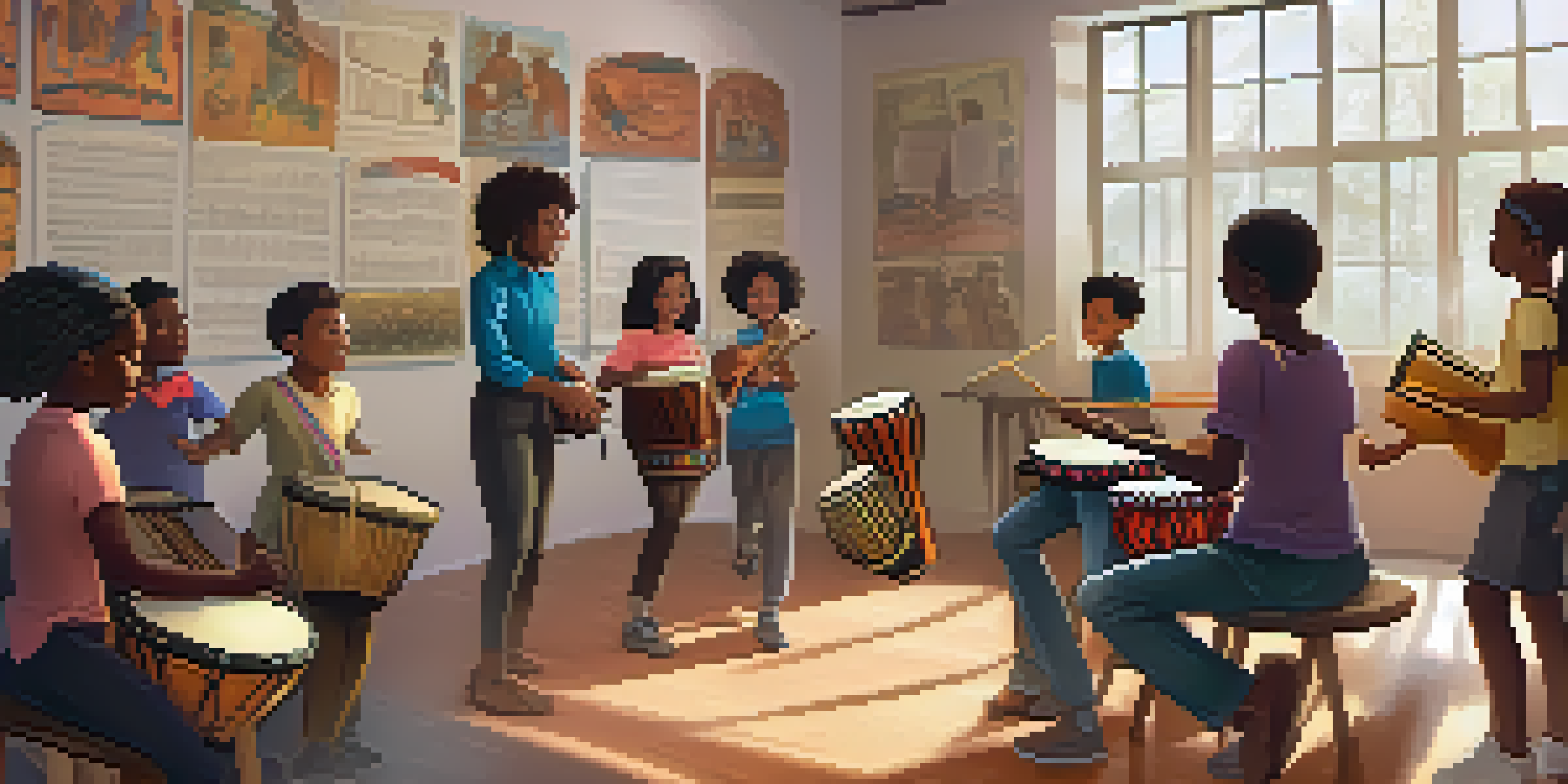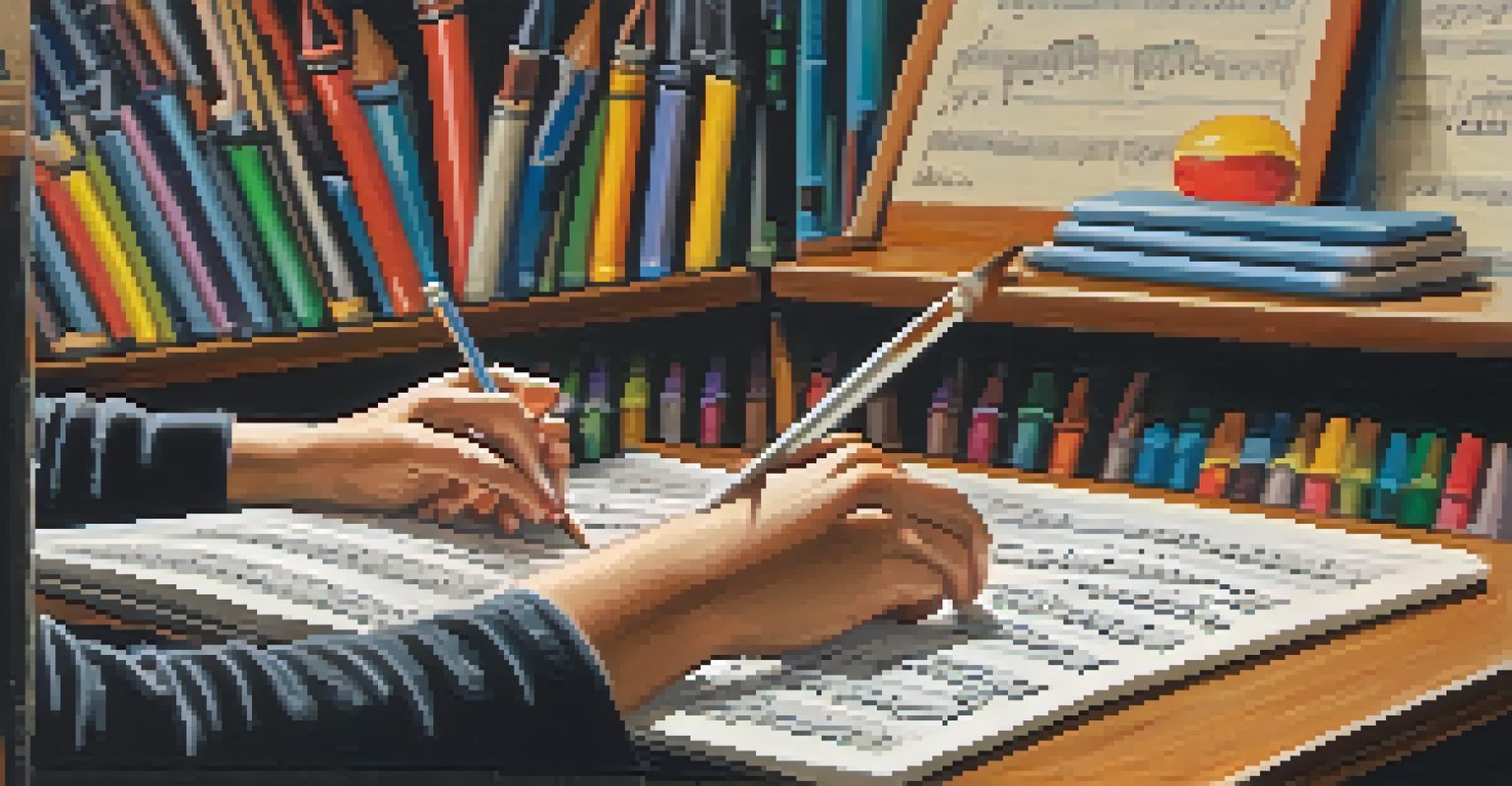Cultural Appropriation in Music Education: A Pedagogical Approach

Defining Cultural Appropriation in Music Education
Cultural appropriation refers to the adoption of elements from one culture by members of another culture, often without permission or understanding. In music education, this can manifest when educators incorporate musical styles or traditions from different cultures without acknowledging their origins or significance. It's crucial to differentiate between appreciation—where one learns about and respects a culture—and appropriation, which can lead to misunderstanding and disrespect.
Cultural appropriation is often a misunderstanding of the context and significance behind cultural expressions.
For instance, when a music teacher introduces students to traditional African drumming, it becomes appropriation if the cultural context isn't explained or respected. This not only diminishes the rich history behind the music but can also alienate students from that culture. Therefore, understanding the difference is the first step toward a more respectful and inclusive music education.
Ultimately, recognizing cultural appropriation in music education is about fostering empathy and respect. By teaching students to appreciate the nuances of different musical traditions, educators can create a more inclusive environment that honors all cultures involved.
The Impact of Cultural Appropriation on Students
Cultural appropriation in music education can have significant implications for students, particularly those from marginalized backgrounds. When their culture is used superficially in the classroom, it can lead to feelings of alienation and frustration. Students may feel their heritage is being exploited rather than celebrated, which can hinder their connection to the subject matter.

Moreover, this disconnect can impact students’ self-identity and self-worth. If they see their culture misrepresented or trivialized, it may lead them to disengage from music altogether. Educators must be aware of these feelings and strive to create an environment where all students feel valued and represented.
Understanding Cultural Appropriation
Cultural appropriation in music education occurs when musical elements are adopted without acknowledging their cultural significance, leading to misunderstandings.
Engaging students in discussions about their cultural backgrounds can foster a sense of belonging and pride. By incorporating students' voices and experiences into the curriculum, educators can help cultivate a more inclusive and respectful learning atmosphere.
Strategies for Inclusive Music Education
To promote a more inclusive music education, educators can implement several strategies. First, they should prioritize cultural context by teaching the history and significance of various musical styles. This allows students to understand and appreciate the depth of the music they are learning.
To appreciate a culture is to understand its history and the people behind it.
Additionally, involving community members from diverse backgrounds can enrich the educational experience. Guest artists or local musicians can share their stories and cultural practices, offering students authentic insights that textbooks often lack. This hands-on approach helps bridge the gap between theory and real-life experiences.
Furthermore, creating a curriculum that includes a diverse range of music from around the world encourages students to explore and appreciate different cultures. By doing so, educators not only combat cultural appropriation but also enhance students' musical literacy and creativity.
The Role of Educators in Cultural Sensitivity
Educators play a pivotal role in fostering cultural sensitivity within music education. They are responsible for guiding students to appreciate the richness of various musical traditions while acknowledging their origins. This requires ongoing education and self-reflection on the part of the teacher to understand their own biases and assumptions.
Professional development opportunities focused on cultural awareness can equip educators with the tools they need to address cultural appropriation effectively. Workshops, seminars, and collaborative discussions can provide valuable insights into how to approach diverse musical traditions respectfully.
Creating Inclusive Classrooms
Educators can foster inclusivity by incorporating diverse musical traditions and engaging students in discussions about their cultural backgrounds.
Ultimately, by modeling cultural sensitivity and promoting open dialogue, educators can create a safe space for students to explore and celebrate their diverse musical heritages.
Integrating Cultural Education into Music Curriculum
Integrating cultural education into the music curriculum is essential for combating cultural appropriation. This can be achieved by designing lesson plans that include not just the music but the stories, values, and traditions behind it. By providing context, students gain a deeper understanding of the music they study.
For example, when teaching about jazz, educators can delve into its African American roots, discussing the social and historical factors that shaped the genre. This approach not only enriches students' knowledge but also honors the contributions of the culture from which the music originates.
Moreover, encouraging students to research and present on different musical traditions can empower them to take ownership of their learning. This fosters a sense of respect and appreciation for the diverse cultures represented in the classroom.
Promoting Collaboration Across Cultures
Collaboration across cultures in music education can lead to a richer learning experience for students. By creating opportunities for students to collaborate with peers from different cultural backgrounds, educators can promote cross-cultural understanding and respect. This could involve joint projects, performances, or even exchange programs that expose students to a variety of musical practices.
Such collaborations not only enhance students' musical skills but also foster relationships and friendships that transcend cultural barriers. Students learn to appreciate different perspectives, leading to a more cohesive classroom environment.
Ongoing Reflection and Adaptation
Regular evaluation of teaching practices is essential for ensuring cultural sensitivity and creating a respectful learning environment.
Additionally, these collaborative experiences allow students to challenge stereotypes and assumptions about other cultures. By working together, they can create music that reflects their diverse backgrounds, ultimately leading to a more inclusive music education landscape.
Evaluating and Reflecting on Teaching Practices
Regularly evaluating and reflecting on teaching practices is crucial for addressing cultural appropriation in music education. Educators should assess their curriculum and teaching methods to ensure they are inclusive and respectful of all cultures. This self-reflection can help identify areas where improvements can be made and where cultural sensitivities may have been overlooked.
Seeking feedback from students and colleagues can also provide valuable insights into how well cultural issues are being addressed in the classroom. Open discussions about cultural representation can lead to constructive changes that benefit the entire learning community.

Incorporating feedback and continuously adapting teaching practices creates a dynamic educational environment. This ongoing commitment to cultural sensitivity not only enhances students' learning experiences but also fosters an atmosphere of respect and understanding.